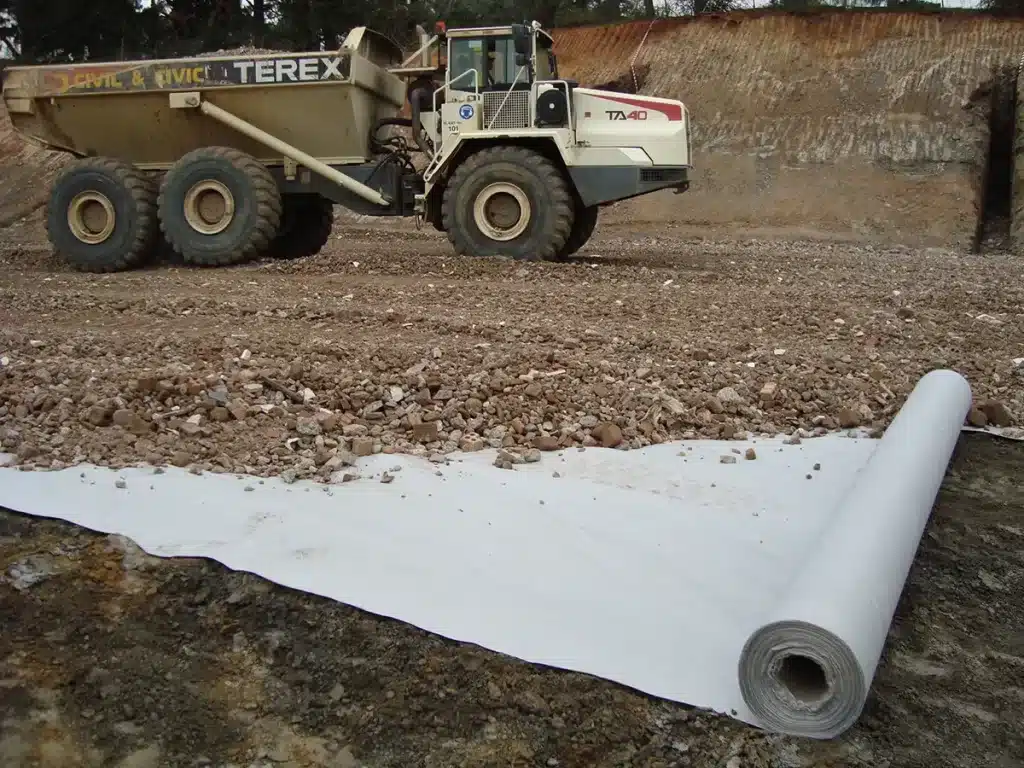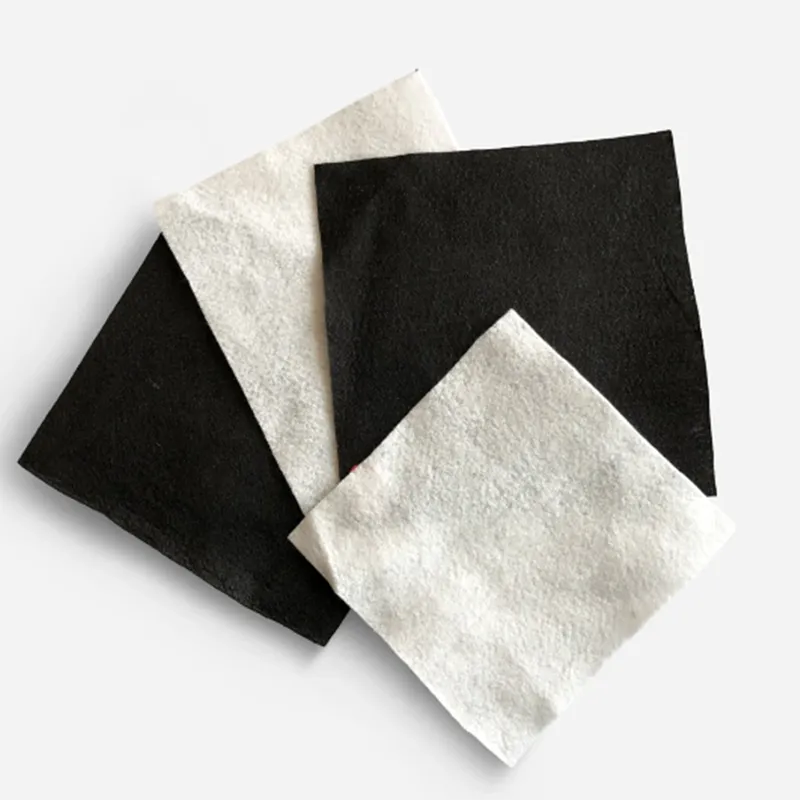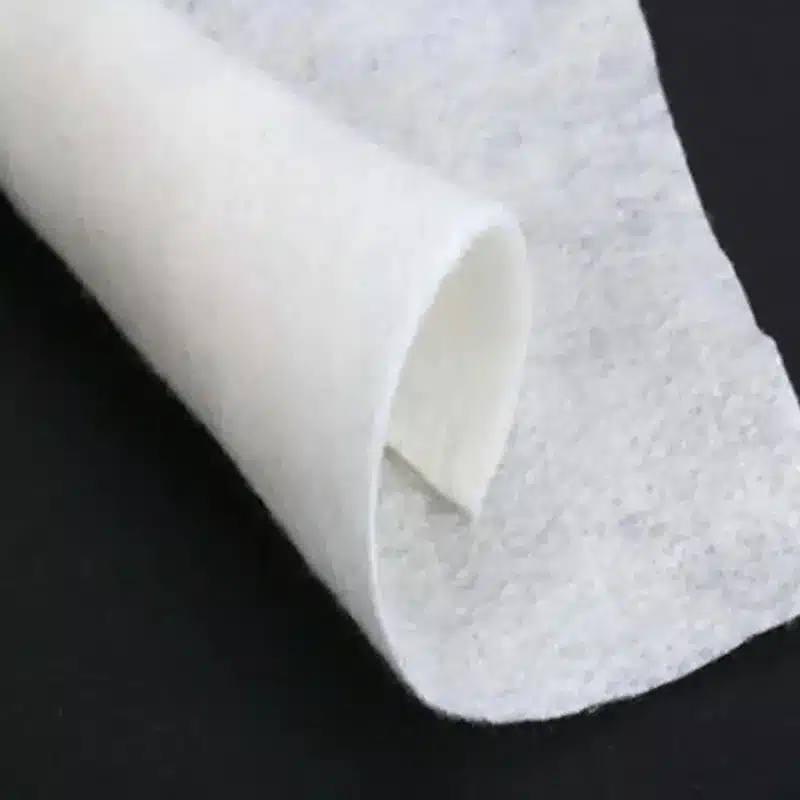+86-159 9860 6917
info@geofantex.com
geofantex@gmail.com
+86-400-8266163-44899
Geotextiles are essential components in modern civil engineering and construction, offering versatile solutions for soil reinforcement, filtration, separation, and drainage. Among the different types, woven and nonwoven geotextiles stand out due to their distinct manufacturing methods and functional properties. Understanding the differences between them is key to selecting the right material for each application.
Key Differences Between Woven and Nonwoven Geotextiles
Woven and nonwoven geotextiles are two primary types of geosynthetic fabrics, each with distinct manufacturing methods, properties, and applications:
- Manufacturing:
- Woven geotextiles are produced by interlacing synthetic fibers (commonly polypropylene or polyester) in a crisscross pattern, creating a strong, durable fabric with high tensile strength.
- Nonwoven geotextiles are made by bonding or needle-punching fibers together without weaving, resulting in a felt-like, porous material.
- Properties and Performance:
- Woven geotextiles offer higher tensile strength and durability, making them ideal for soil stabilization, reinforcement, and separation in heavy-load applications like road construction and retaining walls. They have lower permeability due to their tighter weave, allowing limited water flow and filtration.
- Nonwoven geotextiles provide superior water permeability and filtration capabilities, excelling in drainage, erosion control, and soil separation tasks. They are more flexible but generally less strong than woven types.
- Applications:
- Woven fabrics are preferred where load-bearing capacity and long-term stability are critical.
- Nonwoven fabrics are used when efficient drainage and filtration are the main concerns.
- Durability:
- Woven geotextiles typically have better UV resistance and are more suitable for long-term outdoor exposure.
- Nonwoven geotextiles may require additional protection for extended UV exposure.

What is woven geotextile fabric used for?
- Drainage Systems: Enhances water flow while preventing soil clogging in roads, railways, and landscaping.
- Erosion Control: Protects slopes, embankments, shorelines, and retaining walls from soil loss.
- Separation: Prevents mixing of soil layers in subgrade construction, maintaining structural stability.
- Filtration: Captures fine particles in stormwater management, wastewater treatment, and landfills.
- Road and Pavement Foundations: Supports soil stabilization while allowing water to drain efficiently.
Does water pass through woven geotextile?
Yes, water can pass through woven geotextile, but its permeability is lower compared to non-woven geotextiles due to its tightly woven structure.
- Filtration: Woven geotextile allows limited water flow while filtering soil particles, making it suitable for separation and stabilization applications.
- Drainage: It is less effective for high-drainage requirements because its pore openings are smaller.
- Strength: Woven geotextiles offer higher tensile strength, ideal for road construction or erosion control where load distribution is crucial.
- Best use: If optimal drainage is needed, non-woven geotextiles are recommended due to their higher water permeability.

What is the difference between non-woven geotextile and woven geotextile?
Manufacturing Method:
- Woven: Interlaces synthetic fibers (polypropylene or polyester) in a crisscross pattern.
- Non-Woven: Bonds or needle-punches fibers together without weaving, creating a felt-like texture.
Strength and Durability:
- Woven: High tensile strength, ideal for heavy-duty load-bearing applications.
- Non-Woven: Less strong, more flexible, suitable for filtration and drainage rather than structural reinforcement.
Permeability:
- Woven: Lower water permeability due to tight weave; allows limited water flow.
- Non-Woven: High water permeability, excellent for drainage, soil filtration, and erosion control.
Applications:
- Woven: Soil stabilization, road construction, retaining walls, and projects requiring structural support.
- Non-Woven: Drainage systems, erosion control, separation of soil layers, and water filtration projects.
Durability & UV Resistance:
- Woven: Generally more durable and UV-resistant, suitable for long-term outdoor use.
- Non-Woven: May require additional protection for prolonged UV exposure.
Key Consideration:
- Choose woven geotextiles for strength and stability in heavy-duty projects.
- Choose non-woven geotextiles when filtration, drainage, or water flow is the priority.
Woven and non-woven geotextiles differ significantly in their manufacturing, structure, and applications. Woven geotextiles are made by interlacing synthetic fibers and are known for their high tensile strength, making them ideal for soil reinforcement, stabilization, and separation in heavy-duty construction projects like road building and retaining walls. Non-woven geotextiles are produced by bonding fibers without weaving, offering excellent filtration and drainage properties. While woven fabrics are more durable and UV-resistant, non-woven ones are more permeable and flexible. The choice between them depends on the specific requirements of the project—strength versus filtration.



Get Free Sample
We’ll respond as soon as possible(within 12 hours)





















